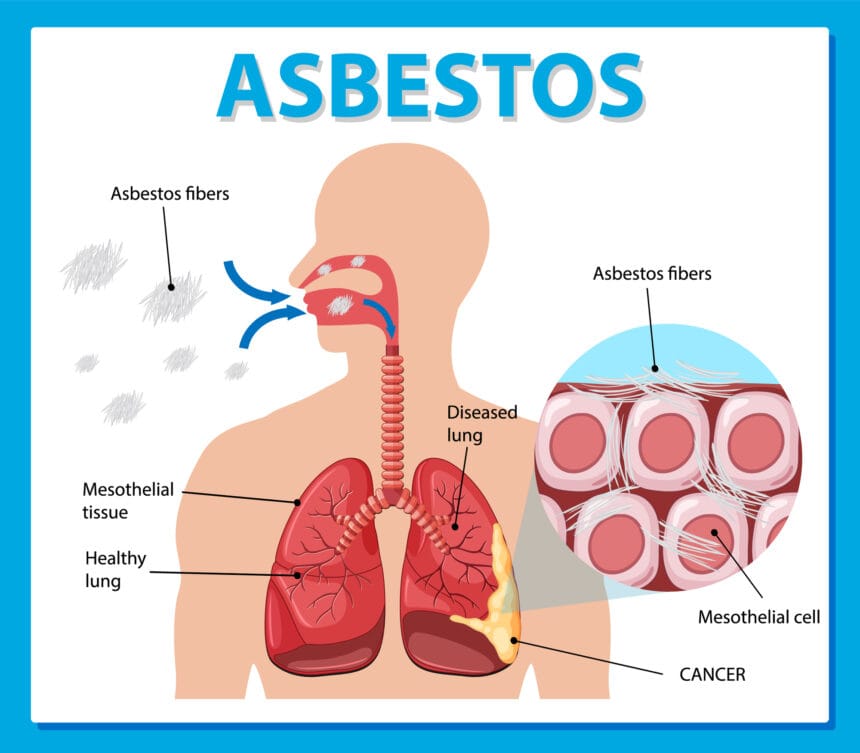Mesothelioma, a rare but aggressive cancer, has been definitively linked to asbestos exposure. The connection between the two is important in both preventing and seeking appropriate medical and legal assistance when needed.
A Brief Overview of Asbestos
Asbestos is a naturally occurring mineral composed of flexible fibers that are resistant to heat, electricity and chemical corrosion. These properties made it incredibly valuable in various industries throughout the 20th century. The main types of asbestos include:
- Chrysotile (white asbestos): The most commonly used form, accounting for the highest number of buildings across the United States and is primarily found in roods, walls, ceilings and floors.
- Amphibole asbestos: Including amosite (brown asbestos) and crocidolite (blue asbestos), considered more dangerous due to their needle-like fibers that can more easily penetrate tissue.
Common Use of Asbestos
Before its dangers were widely recognized, asbestos was incorporated into thousands of products across numerous industries. The most common application included:
- Construction materials such as insulation, roofing shingles and floor tiles.
- Textiles, including fire-resistant clothing and blankets.
- Industrial adhesives and sealants
How Does Asbestos Exposure Lead to Mesothelioma?
When asbestos-containing materials are disturbed, microscopic fibers become airborne and can be inhaled or ingested. These fibers are extremely durable and cannot be broken down by the body. Once inside, they lodge themselves in the mesothelial tissue, causing inflammation and scarring. Over time, these trapped fibers can trigger genetic changes in cells, leading to the development of mesothelioma.
Why Mesothelioma Develops Decades After Exposure
The latency period between initial asbestos exposure and mesothelioma diagnosis typically ranges from 20 to 50 years. This extended timeline occurs because asbestos fibers gradually cause damage to the mesothelial cells. The body’s inflammatory response and repeated attempts to heal the damaged tissue eventually lead to genetic mutations that can trigger cancer development.
Who is Most at Risk for Asbestos-Related Diseases?
Certain professions face a significantly higher risk of asbestos exposure and include:
- Construction workers, demolition crews and renovators
- Shipyard workers and veterans
- Factory workers, particularly in textile mills
- Miners and industrial workers
- Mechanics and automotive repair professionals
These individuals will need to to monitor their health as they may be at high risk of mesothelioma and may be entitled to asbestos claim payouts.
Secondary Exposure: The Hidden Danger for Families
Family members of workers in high-risk occupations face danger through secondary exposure. This typically occurs when workers unknowingly bring asbestos fibers home on their clothing, tools or hair. Regular activities like laundering work clothes can release these fibers into the home environment, putting family members at risk.
Moving Forward: Protection and Justice
The link between asbestos and mesothelioma is one of the greatest occupational health discoveries of the 20th century. Understanding this connection remains crucial for protecting workers, ensuring proper safety measures and helping victims receive appropriate compensation.
While regulations have improved, the long latency period of mesothelioma means new cases will continue to merge from past exposures Awareness, prevention, and support for affected individuals and families remain essential components in addressing this issue.

